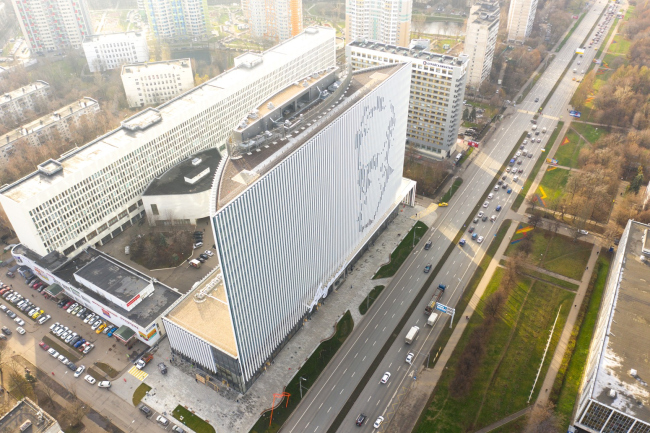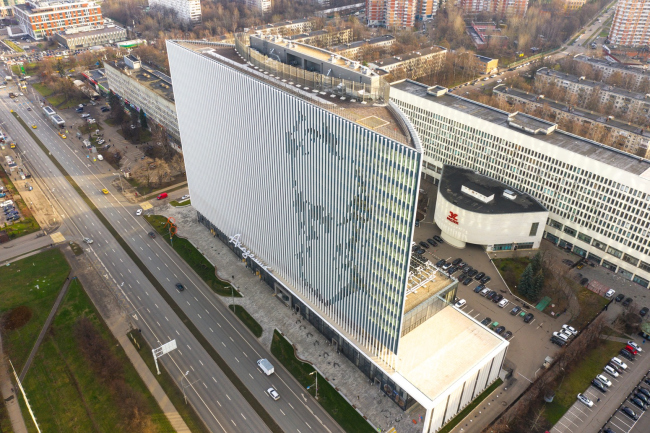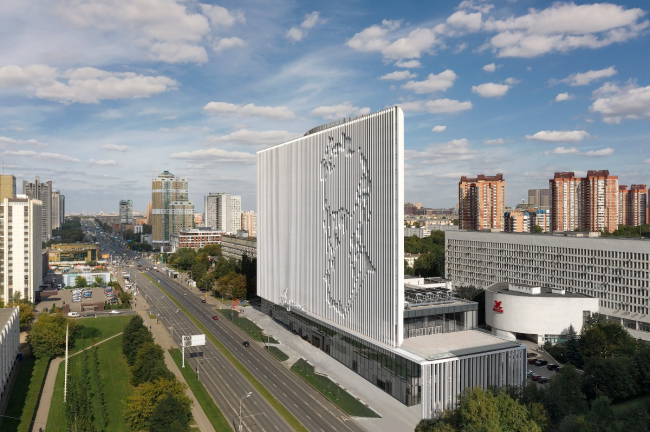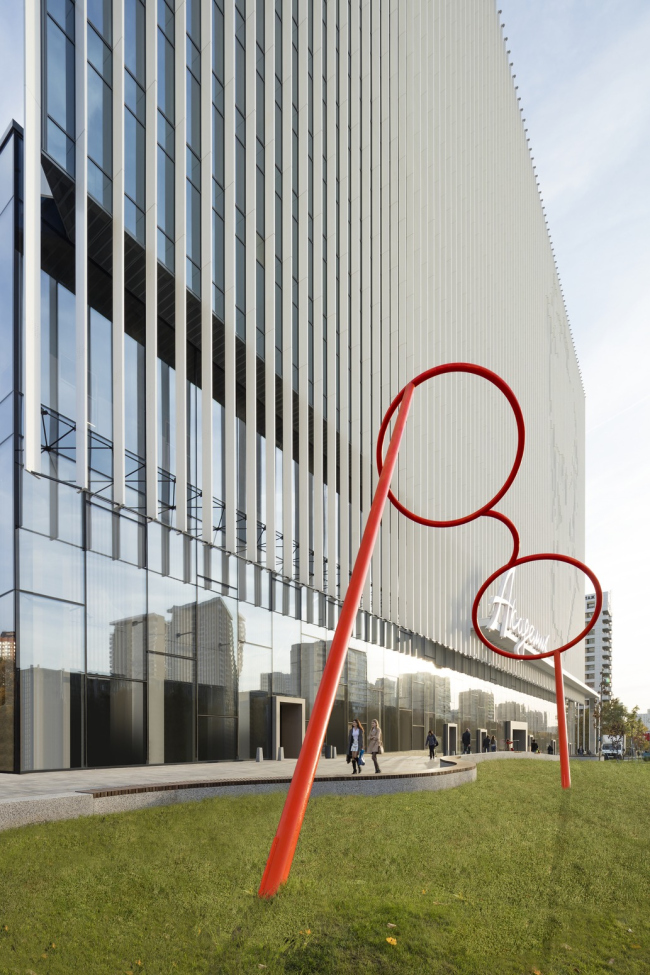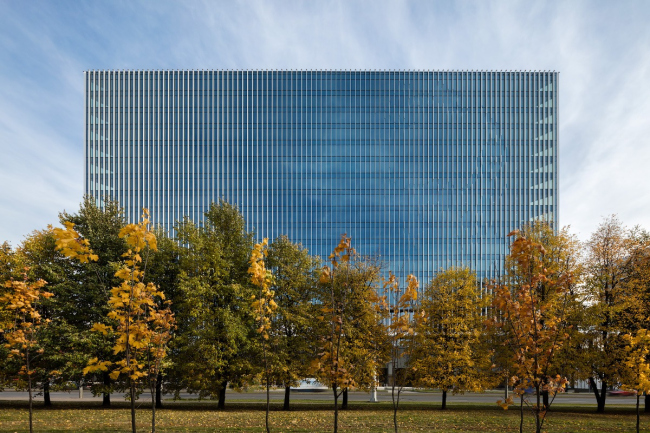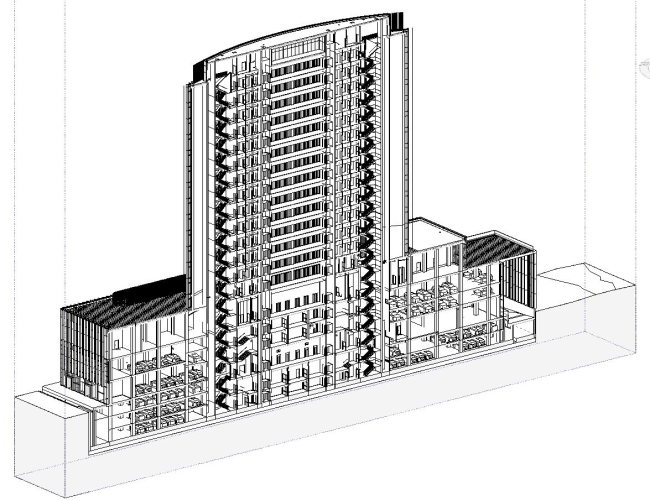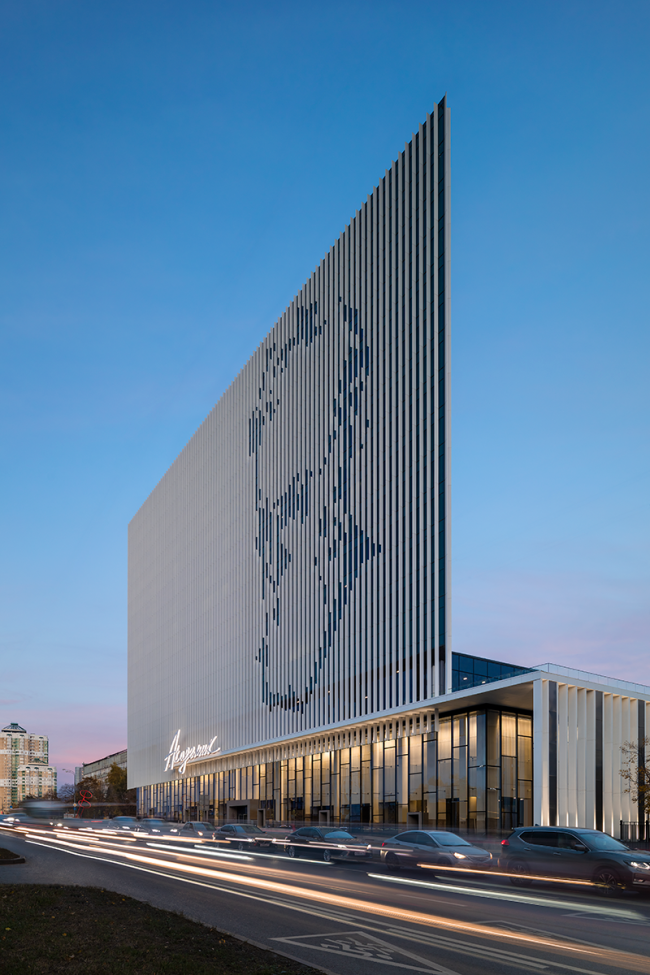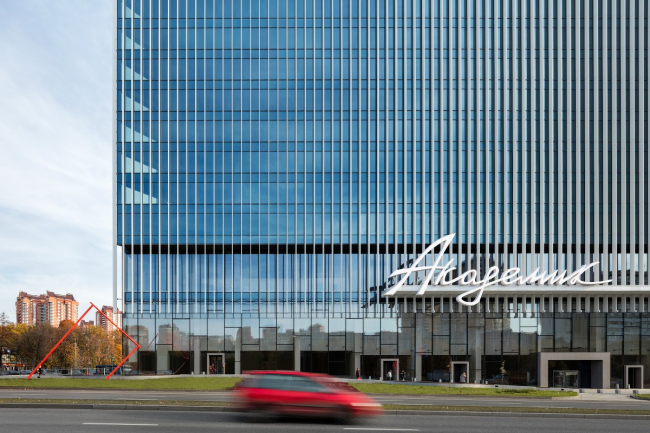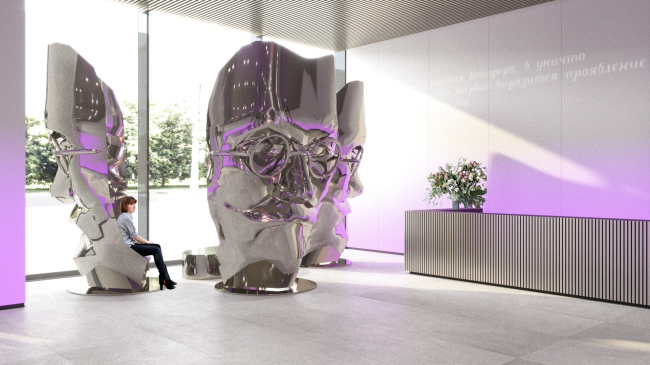|
Published on Archi.ru (https://archi.ru) |
|
| 23.01.2020 | |
|
Architecture of Evanescence |
|
|
|
|
| Architect: | |
| Yuliy Borisov | |
| Studio: | |
| UNK | |
|
On the Vernadskogo Avenue, next to the metro station, appeared a high-rise landmark that transformed the entire area: designed by UNK Project, the “Academic” business center uncovered, in the form of its architecture, the meanings of the local place names. The new gravity center of this area appeared next to the “Prospect Vernadskogo” metro station, on the land site abandoned still in the 1990’s, which lay derelict for a long time: the three stories of an incomplete building behind the fence two steps away from the metro station created a depressive zone and caused justified concern of the local residents. This spatial hole was not exactly aesthetically pleasing to motorists either: while driving down the avenue from the city center they saw that the rhythmic pattern formed by the towers designed by Evgeny Rozanov (the project of 1975 included three towers, their construction being still incomplete) gave way to monotonous rank-and-file buildings which were definitely at odds with the status of this area. “Academic” business center on the Vernadskogo AvenueCopyright: Photograph © Denis Zaitsev / UNK projectConsidering the necessity of creating a true landmark here, the architects saw their task as designing a building that would fit in as tactfully as possible with the surrounding modernist context. Among other things, from the east side of the construction site, stands the Tsentrsoyuz i Minvostokstroy building (the project of 1968, under the supervision of Evgeny Stamo, construction of 1986) – a long slab with a characteristic entrance group of a curvilinear shape. “Academic” business center on the Vernadskogo AvenueCopyright: Photograph © Denis Zaitsev / UNK projectThe form that the architects found for this building as well as the decoration of its façade with the lamellae, makes the volume visually lighter; in spite of its sculptural nature and in spite of its grand size, it becomes a dynamic object that changes continuously as perceived by pedestrians and motorists. Interesting is the fact that the façade lamellae, while giving and ethereal look to the visual appearance of the building, also help to bring out the conceptual meaning of the place: they display the portrait of the Russian scientist whose name is borne by the metro station and the avenue. “Academic” business center on the Vernadskogo AvenueCopyright: Photograph © Dmitry Chebanenko / UNK projectAnd, indeed, when still in the construction stage, when the construction site was surrounded with fences, the area got a new landmark that was attracting people’s attention not only with its shape, but also evoking people’s curiosity – whose portrait is gradually appearing on the facade? – still at that time the place became a true gravity center. Today, after completing the landscaping project of the surrounding area, and after the opening of a pedestrian route, the bright-red spectacles sculpture, standing next to the sidewalk, and the backlight of the facades, noticeable even by daylight, enhanced that effect, marking the fact that the building belongs to this place, this city, and its people. “Academic” business center on the Vernadskogo AvenueCopyright: Photograph © Dmitry Chebanenko / UNK projectAvoiding a verbatim use of the architectural vocabulary of the 1970-80’s, UNK Project created a modern thing, yet strikingly resonant with the surrounding late-Soviet modernism: the sculptural shape, the color and plastique solutions of the facades – everything puts one in the mind of the best samples of modernism, yet without the dusty layer of nostalgia. “Academic” business center on the Vernadskogo AvenueCopyright: Photograph © Dmitry Chebanenko / UNK projectFrom an incomplete building to the lens idea The story of creating the project of the business center and its realization is unique by the standards of today. At one of the architectural panel discussions that took place in spring this year, the chief architect of UNK Project, Yuliy Borisov, while sharing about the project of the business center “Academic”, the construction of which was all but completed at the moment, noted that its design stage took two years. This remark, seemingly insignificant, caused a fair amount of jealousy in many of his fellow colleagues, because in the realities of today, the design process, having hardly started, begins to run parallel to the construction. Possibly, one day this “parallel design” will become the usual practice, yet now it causes a lot of concern, as it can hardly be conducive to great results. Furthermore, the project renders (see the publication of the project) differ very little from the photographs of the complete business center, and this considering the fact that the project is anything but standard – both technically and configuration-wise. The first problem was the foundation that was laid within the framework of implementing the predecessor project. There is a metro line running underneath it. There was also a discussion about dismantling the foundation, different engineers and designers proposing different solutions. Already at that stage, the client got involved in the discussion, demonstrating his willingness to cooperate with the architects. “Academic” business center on the Vernadskogo AvenueCopyright: © UNK project“Academic” business center on the Vernadskogo Avenue. Section viewCopyright: © UNK project“The client did not hurry us up giving us an opportunity to work through all the details while still in the design stage and prevent possible construction problems. The mockups that we created in the process came in very handy for motivated explanations that sped up the decision making process – Yuliy Borisov notes – This referred both to the construction and the decoration details”. For example, in order to avoid the necessity of using beams, which would have inevitably complicated the process of routing the engineering lines and noise insulation in the subsequent decoration of the office, the architects used the unique, by Moscow standards technology of concrete pouring into a large-span shell: inside the monolith concrete, they first placed the void-forming plastic balls, or the “blockouts”, that looked very much like footballs. Vernadsky’s Face Nowadays we, while going down the street, rarely wonder where it got its name from. And in Moscow this loss of connection between the place and its name is felt particularly acutely. And, while pretty much everyone understands just why the Red Square is “red”, the abundance of surnames in this city’s toponymy has long since stopped evoking in people any interest for the historical personalities, in whose honor these streets and squares were named. Probably, hardly anyone will remember why the Vernadskogo Avenue was named that way, yet with the introduction of the business center “Academic”, or, rather, the portrait of the Russian scientist on its facade, the very meaning of the place has changed, as well as the perception of the name of the avenue and the area around the metro station. The architecture of this building, which looks as if it’s about to dissolve in the space, yet at the same time materializing the identity of the place, curiously rhymes the ideas of Vladimir Vernadsky himself, who foresaw the information society and who was developing the ideas of anthroposphere, the shell of our planet, created by human mind. “Academic” business center on the Vernadskogo AvenueCopyright: Photograph © Dmitry Chebanenko / UNK projectThe technical solution for the scientist’s portrait – trimming in certain places the facade lamellae, widely used in modern architecture – required from the architects long calculations abs using several 3D modeling software applications. The architects took into account not only views from various vantage points but also the lighting options, to make sure that the image supports the rhythm of the building itself, and “works” with the neighboring buildings as well. Another example of homage to modernism is the main sign of the business center: the name “Academic” is written in one flourish: according to the legend that is sometimes heard in the architectural studio, its author is Yuliy Borisov himself who wrote the name of the project on a piece of paper in order to have a calligrapher draw it properly, but the client asked to leave the flourish as it was. The sign is also beautifully backlit at night. “Academic” business center on the Vernadskogo AvenueCopyright: Photograph © Dmitry Chebanenko / UNK projectThe architects took the edge off the modernist “seriousness” of the building by installing a sculpture in its immediate vicinity – the academician’s glasses were placed on the red line of the avenue; they can also be regarded as part of the landscaping project. “Academic” business center on the Vernadskogo AvenueCopyright: Photograph © Dmitry Chebanenko / UNK projectThe human-friendly scale of the building for the pedestrians is also created at the expense of the glass facades of the 4-story rectangular plinth, upon which the architects placed a 14-story lens. Thanks to the large shop windows, the building is closely connected to the city space, and soon there will be shops, cafes, and entrance lobbies here. Inside of “Academic” The interiors of the building are also connected to the “academic” theme. “While the image of the building was quick to come – the sketch was created within one day – the interiors of the entrance zones and the public spaces took a lot more working time; we had to choose from several different options because we wanted to find a simple and self-explanatory solution, connected with the facades” – Yuliy Borisov comments on the search. The first thing that catches the eye when you come into the building are the three gigantic sculptural armchairs, executed in the shape of the head of Vladimir Vernadsky, each two and a half meters tall. Thus, everyone who gets inside “Academic” can have an opportunity to be inside the professor’s head. The armchairs are executed from stainless steel. “Academic” business center on the Vernadskogo AvenueCopyright: © UNK projectConsidering the interior from the point of view of ideology and philosophy, the architects also proposed to decorate it with the scientist’s quotes that are not only projected to the wall but are also whispered on the intercom in the public zones. By the way, the public zones on the floors are separated from the elevator lobbies with glass, which makes it possible to enjoy 360-degree panoramic views from the elevators. This original solution – the glass partitions that were to correspond to the fire safety standards – turned out to be quite expensive, but the architects were able to convince the client not to save up on visual effects and do everything in accordance with the project. 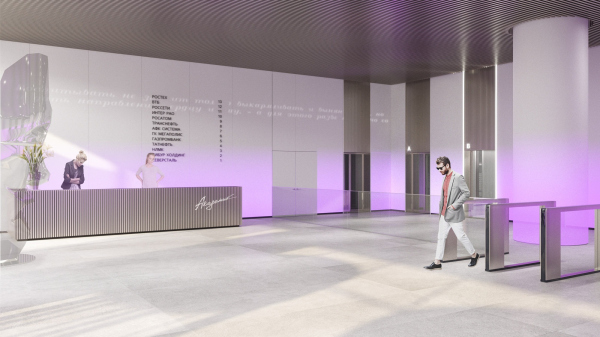 NoneCopyright: © UNK project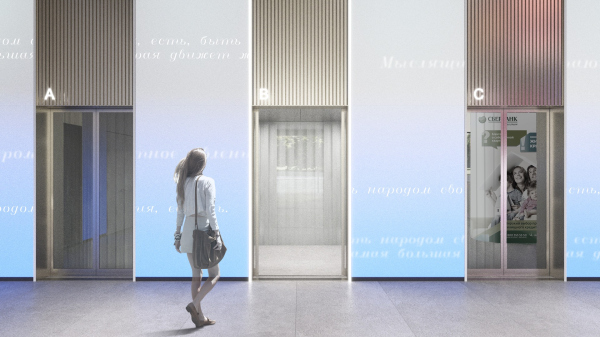 NoneCopyright: © UNK project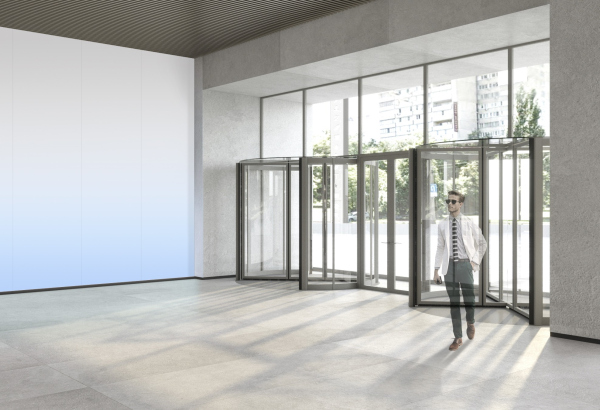 NoneCopyright: © UNK project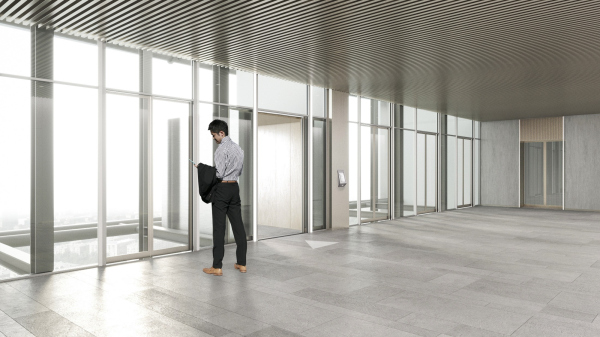 None None |
|
